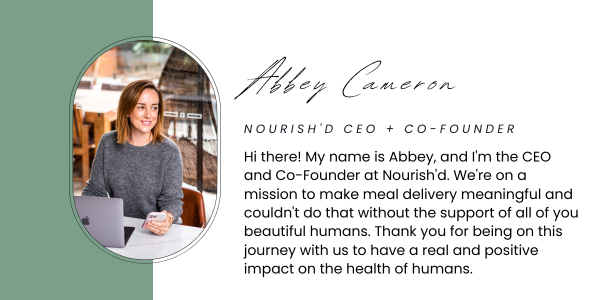We want to bust the biggest marketing myths out there, that are keeping the fat on your body when you think you're eating healthy!
1. Low Fat
Fat has a long history of being vilified when it comes to nutrition. Late in the last century some pretty sketchy (read: low on actual scientific evidence) reports were released saying fat was the bad guy - the idea spread that fat would clog your arteries, increase your cholesterol, and add to that belly fat, among other things. Research in the past few decades has shown that in fact, naturally occurring fats are generally not the problem. Good fats are in fact essential to your physical survival. This research however led to a whole new industry of ‘low-fat’ foods - yoghurts, milks, biscuits, cereals and many many other processed products. But here’s what they don’t tell you - when you remove fat from food, it tastes like cardboard, and who wants to eat that? Enter sugar. If you look at the ingredients list on foods proudly displaying their ‘low-fat’ labels, you’ll find that sugar (or sugar substitutes) are pretty high up on the list. What’s the problem? Recent studies have suggested that sugar is the single most dangerous ingredient in the modern Western diet - and currently the foods marketed to us as ‘healthy’ are choc full of it! READ MORE: FOR MORE INFO ON THE DANGERS OF SUGAR, CHECK OUT THIS ARTICLE
2. No Added Sugar
Sure - after the last point you would think that foods marketed as ‘no added sugar’ would be great! But here’s the thing - there are a load of sugar alternatives out there, that are basically just sugar with a different name. Check out this chart of 60 different names/ingredients that are used instead of simple ‘table sugar’. It’s always really important to read the ingredients list on packaged food, or better yet, buy foods without an ingredient list.

3. The Government Health Star Rating
Health star ratings were introduced in Australia in 2015 as ‘a quick and easy way to compare the nutritional profile of packaged foods.’ (side note: at this point, the ratings are voluntary and not required to be displayed). While it’s certainly a great idea to make information readily available to consumers in an easy to read fashion, it needs to be done in the right way. According to the website ‘The number of stars (between ½ and 5) is determined using a calculator designed to assess positive and risk nutrients in food’. Now, we could bang on for hours about the limitations of this system, but we’ll let it speak for itself... Currently plain milk, nothing added, straight from the farm receives 4 stars in the rating system - this item has one ingredient, milk. An Up & Go (notably marketed as low-fat) on the other hand is given a rating of 4.5 stars - check out the ingredients list (including 4 teaspoons of added sugar - the total daily amount recommended by the World Health Organisation in one 250ml drink) and decide for yourself which one you think is healthier? Filtered water, skim milk powder, cane sugar, soy protein, corn maltodextrin, vegetable oils (sunflower, canola), hi-maize™ starch, inulin, fructose, cocoa (0.5%), flavours, mineral (calcium), food acid (332), vegetable gums (460, 466, 407), stabiliser (452), salt, vitamins (C, niacin, A, B12, B6, B2, B1, folate).
Our Tips for Beating the System
With all of this fancy marketing out there it’s hard to know what’s really healthy, and what’s just being ‘spun’ that way. Here are some tips to help you along the way:
- Buy whole, unprocessed foods as much as possible. Around the edges of the supermarket you will find everything you need - vegetables and fruit, nuts, fresh meat, milk and high fat dairy. Avoid the aisles.
- If you do find yourself needing to buy a packaged product, always read the ingredients list. If sugar (or any of the other names listed above) appear high up in the list, avoid purchasing.
- Learn as much as you can about what ‘healthy’ foods really are. This doesn’t take a degree in nutrition - the right blog articles can give you great information in a short, and concise manner, allowing you to make better decisions.



